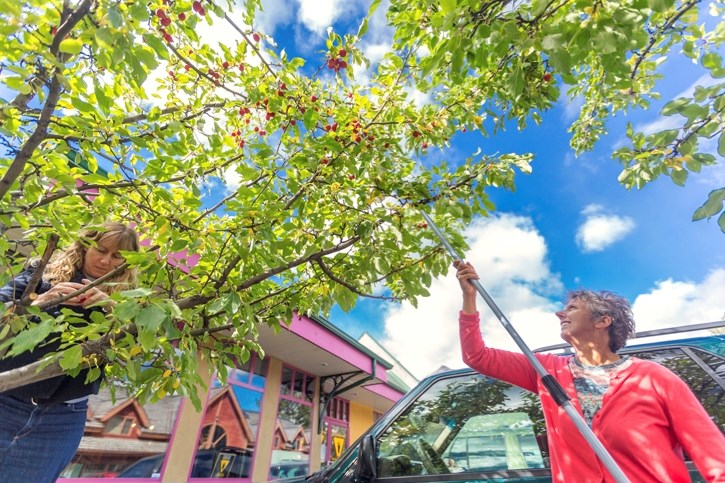The Town of Canmore reminds residents that it’s now against the law to leave crabapples and other fruit on trees for bears to eat – and those not abiding by the new legislation can be fined.
As bears start to deplete buffalo berries and other berries, calorie-rich crabapple and other fruit trees have historically lured opportunistic bears into residential neighbourhoods, which is a public safety risk and can lead to a bear’s relocation or death.
The new wildlife attractant bylaw, passed by council last spring, means fines can be issued against people who attract dangerous wildlife to their yards with garbage, bird seed, pet food, buffalo berries, greasy barbecues – even crabapples.
Lori Rissling Wynn, sustainability coordinator and development planner for the Town of Canmore, said it’s now against the law to let fruit accumulate to the point it attracts dangerous wildlife – on the tree or on the ground.
“There are still people with fruit trees in their yard and we strongly encourage them to cut them down or manage their fruit,” she said.
“Unfortunately, if a bear visits a tree, then that’s already a problem. Be proactive about what’s in your yard.”
Under the new wildlife attractant bylaw, the fine for leaving fruit, birdseed or nectar accessible to dangerous wildlife is $100, while actively feeding wildlife can lead to a $500 penalty.
The bylaw defines a wildlife attractant as any substance reasonably expected to attract dangerous wildlife. Dangerous wildlife means bear, cougar, coyote or wolf; or a wildlife species deemed dangerous by a peace, fish and wildlife, or conservation officer.
Rissling Wynn said bylaw officers won’t be actively looking for fruit trees, but the municipality will rely more on reports and complaints from residents.
“Practically speaking, we would likely receive a report of a tree that could be an attractant, or has become an attractant, and bylaw would connect with the homeowner to discuss it,” she said.
“If the homeowner does not remedy the situation, that is either remove the fruit or cut down the tree – we would give people both choices – then the next step could be to issue the fine.”
Last September, an adult male black bear feasting on a crabapple tree in a busy Cougar Creek neighbourhood day and night, and bedding down beneath a backyard deck, was relocated from Canmore amid concerns for public safety.
Every year black bears are moved out of the community, but some years the number has been extremely high – 12 in 2015, 19 in 2012 and 17 in 2007. Many have been bears getting into fruit trees in town.
Nik de Ruyter, education and outreach coordinator for Bow Valley WildSmart, said living with wildlife means allowing animals to remain wild and not become reliant on human food.
“When bears become food-conditioned they can become a public safety risk, and they can be relocated or destroyed because they’ve gained access to food like fruit trees,” he said.
de Ruyter said berry season may be winding down, but bears still need to eat for the next two to three months to fatten up for hibernation.
“They are going to try and find whatever they can and crabapples in people’s backyards are a delicious and filling food,” he said.
“One little tree can have 50 to 80 pounds of fruit on it, which is a lot of food when you compare it to berries.”
Fruit picking equipment can be borrowed from WildSmart. Contact WildSmart at [email protected] to make arrangements to borrow the equipment.
The Town of Canmore last year introduced a voluntary – and free – fruit tree removal program.
Last year’s$30,000 budget saw 30 trees removed and replaced with non-fruit bearing trees, while $25,000 this year is enough to remove and replace 25 trees.
“This year’s program is already fully subscribed,” said Rissling Wynn.




